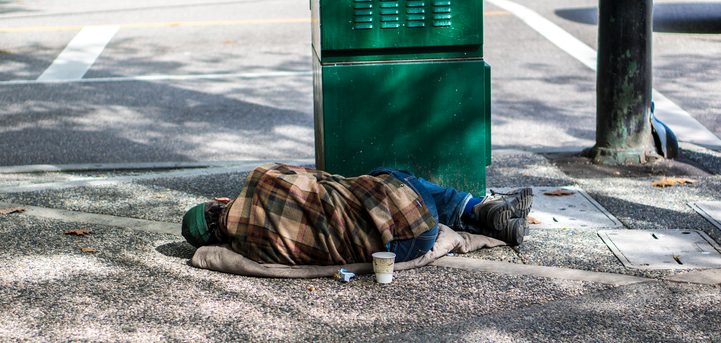I have recently found myself obsessing over this issue of homelessness. Why do I sense there is a growing population in major cities? Why do so many appear to me to be young couples? Does the population seem to be growing or is the problem more apparent because the homeless are coming together creating their own communities? Just so many questions.
My obsession sometimes creeps into my personal life where I ask what could I be doing to help. I recently sat at my kitchen table looking up local homeless shelters. My youngest child kept asking, “Why are you looking up homeless shelters?” I eventually replied, “Just seeing what’s out there.” She seemed really perturbed with my answer.
The reality was we had just cleaned out some clothes and I had found some “like new” shoes, clothes, backpacks and a wide variety of accessories. I knew the school year was starting and I really wanted to donate the items directly to individuals in my city. I know how important it is for teenagers to fit in. I later learned that my child had called her two siblings at college and yelled at them.
She told them “Thanks a lot, since dad has to pay for both of your tuitions and boarding. You took all the money. Now he’s looking up homeless shelters for us.” (For the record, we are fine). But it did bring home a point that maybe society needs to begin openly talking about what’s really going on. In looking back, I could have started my own conversation with my daughter.
I am not sure my assumptions about the homeless populations are necessarily correct. They are simple observations as I drive around various communities. The annual point in time count will give us the best snap shot of the state of homelessness. One thing we know for sure is that the issue is far more complex than ever.
Several cities have sought to declare states of emergencies based on the growing issues related to supporting homeless populations. Most recently: Tacoma and Seattle, Washington and Anaheim, California. We are hearing that more local governments are considering the same. We are seeing major impacts on crime rates, increasing drug related deaths, declining property values, impacts to infrastructure like roads and parks, as well as major health epidemics.
This crisis has become very complex with different populations needing different responses and strategies. There is a need to support returning veterans, mental illness, significant drug addictions from opioids and heroin, families in need and – of course – individuals who find themselves experiencing states of homelessness due to unemployment, poverty and housing affordability challenges.
While there are countless people working to respond to the homeless state of emergency, I turned back to my original question. “How can I help?” And – as is customary – I automatically turn to technology and data to see if the geographic information systems (GIS) community can help come up with innovative approaches to pitching in. And I was happy to know that the GIS community is stepping up.
I am glad to see cities like Riverside, California put this issue out front on their open data portal. The city is emphasizing a data-driven approach to building a strategy to turn the problem around. The County of San Diego, California is mobilizing their workforce to respond to the spread of Hepatitis A that is plaguing the homeless. They have identified hotspots of the outbreak geographically and are sending units out to guide field vaccinations crews. They are quickly collecting data on mobile devices to establish real-time situational awareness through operational dashboards. The City of Anchorage, Alaska is using GIS to address homeless encampments to help place individuals and families into social programs and restore their infrastructure back to normal.
January presents an opportunity to take the technology to the homeless issue. I am referring to the homeless point in time count. Governments can use readily available mobile data collection apps to get an accurate location as a starting point. But that’s just the start. We can also take lessons learned from Aurora, Colorado, Dekalb County, Georgia, Rancho Cucamonga and Redlands, California, who are working towards achieving their goals of impacting homelessness at a faster rate. Several agencies are using location-oriented dashboards that support a data-driven strategy. They are also using apps to connect those in need with much needed services.
While I have a passion for technology and its applications towards solving problems, the starting point remains an open dialogue that extends across all disciplines, not-for-profits and the community that seek to play their role in reducing homelessness.
Author’s Note-My youngest is back to taking thousands of selfies and the unused items found a good home.
Christopher Thomas is part of the GovLoop Featured Blogger program, where we feature blog posts by government voices from all across the country (and world!). To see more Featured Blogger posts, click here.





Leave a Reply
You must be logged in to post a comment.